Emily Tull made a bold leap from oil painting to textile art. Frustrated with painting, she traded her palette knife for a needle and thread, discovering a new way to express herself.
Despite having no formal training, Emily found that hand stitching gave her the control she craved. Not knowing the ‘rules’ liberated her to do whatever worked – and this unlocked endless creative possibilities.
Emily’s artwork often features recycled materials like paper and plastic, emphasising the vulnerable side of life. She is inspired by people and places close to her heart, whether that’s a friend, a family member or wildlife encountered on daily walks.
While Emily describes her creations as scruffy and unfinished, the dynamic energy of her stitches captures a fleeting moment, inviting you to imagine what happens next.
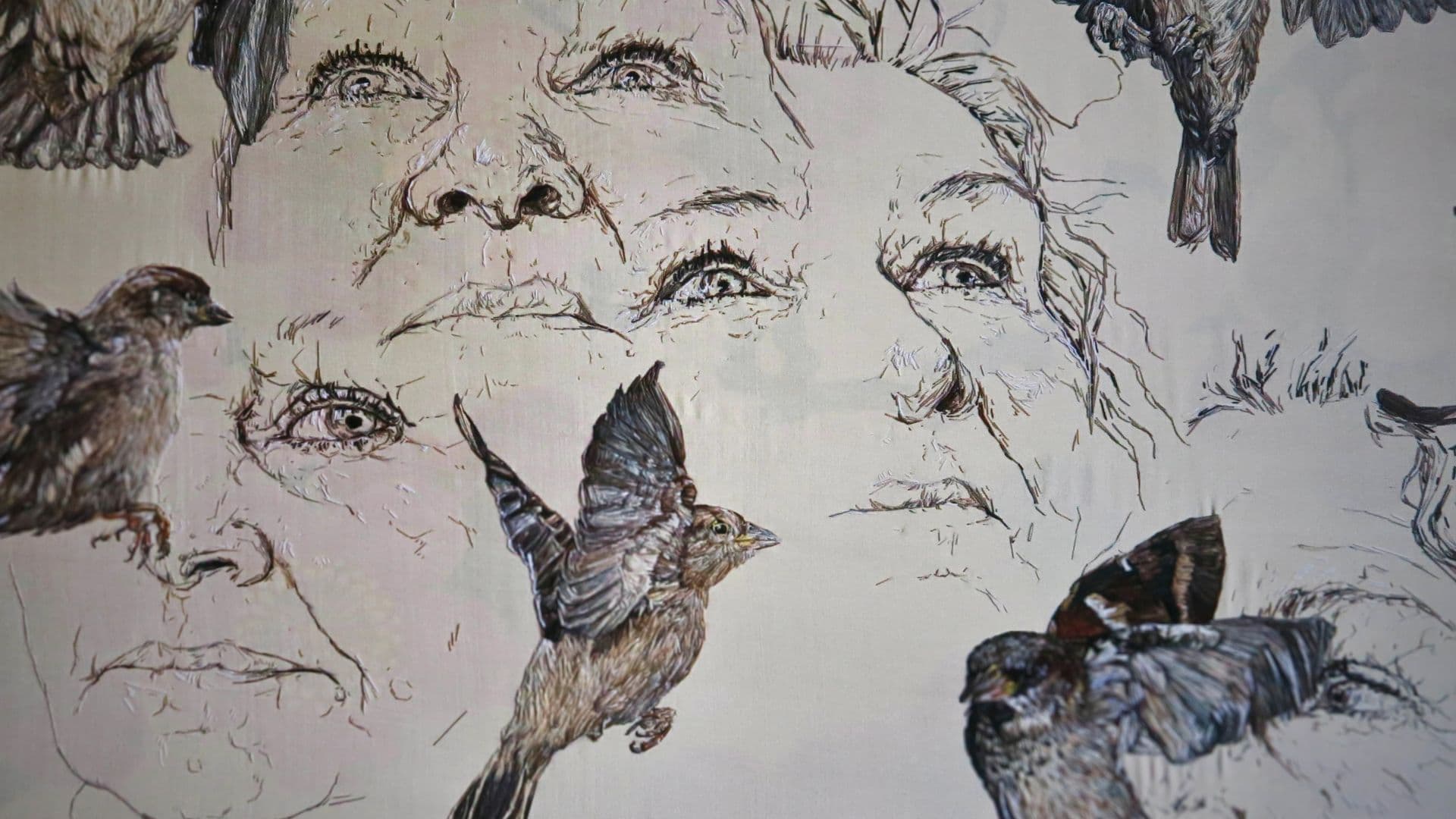
Emily Tull: I am a thread painter and I stitch wildlife and portraits. My work is inspired by fragmented, broken and ripped things. This gives a sense of fragility to my art.
I view my artworks as paintings or drawings. They are called thread paintings because it’s the thread and stitching that I’m interested in. I stitch into wallpaper and plastic as well as fabric.
I focus on portraits, predominantly of family and friends. Since 2020, there has been a shift; nowadays there tends to be more connection to the sitters within my artworks. This could be through the use of particular fabrics or a title that hints at events in their lives.
I’m also interested in wildlife, mainly British species and especially ones that are endangered. I am particularly inspired by the wildlife I come across on walks at my local beach and nature reserve.
For example, fish are stunning creatures and they can be overlooked. This is why I loved highlighting their beauty in my Stitch Club workshop. It was fun creating an exercise using shiny fabrics, which I don’t often use.
Recently I have been working on a series of birds showing the love and hate sides to their lives. I love recreating those brief moments that we might glimpse, but not necessarily pay attention to.
“I consider my artwork as part of a story for someone else to complete.”
Emily Tull, Thread painter
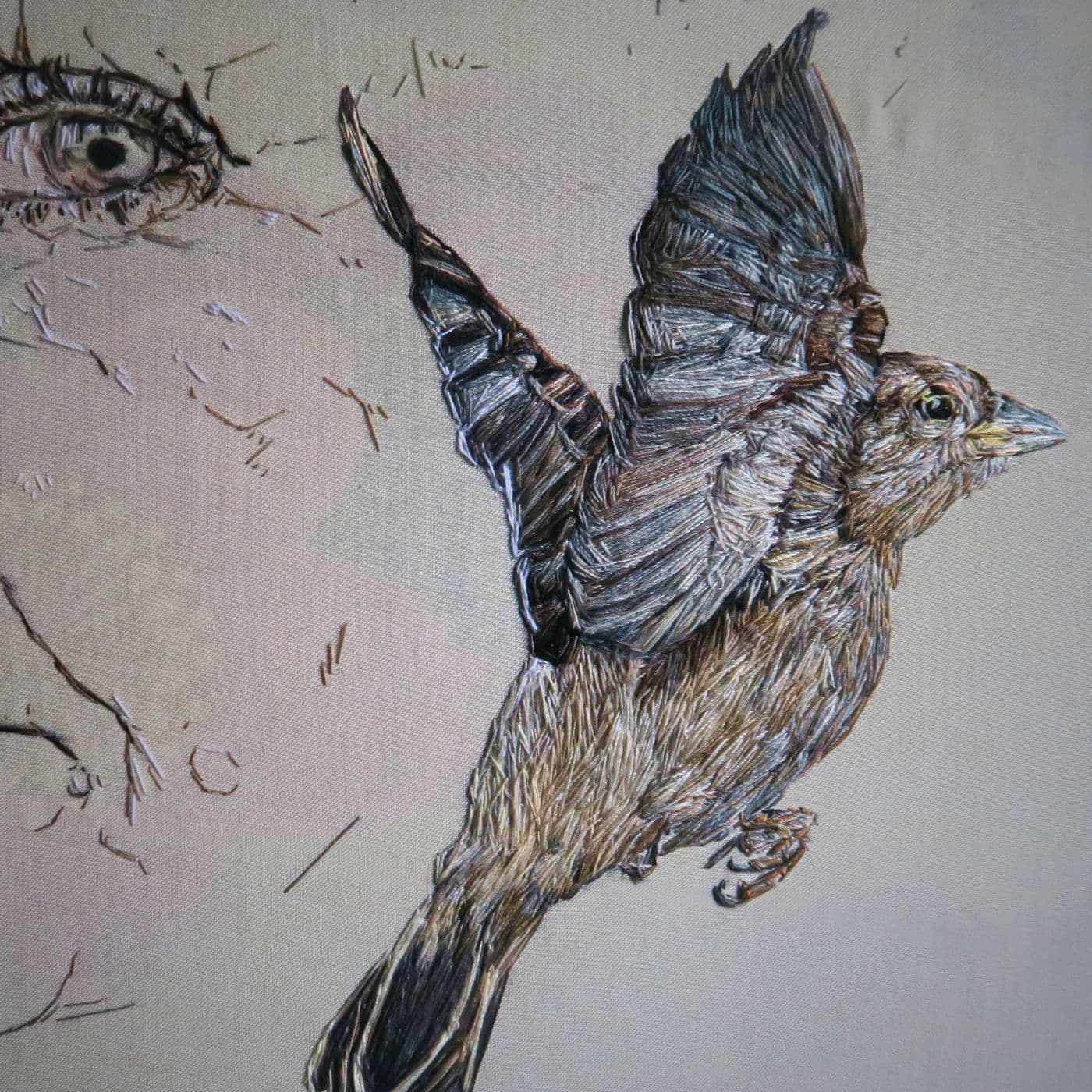
Sparking inspiration
Inspiration comes from many sources including artists such as Frank Auerbach, Lucien Freud and Francis Bacon, the natural world, curiosity cabinets and Egyptian tomb paintings. I might be inspired by a piece of fabric, lyrics from a song, or a line of poetry.
With portraits, I usually start with a title. This often gives me an idea of who the sitter should be and suggests what materials I might use.
Depending on the subject I’ll occasionally work from life, but generally, I work from a reference image. I use my sketchbook to plan out the pose and which fabrics I’ll use. I think about what events in the subject’s life I want to reference and how to do that.
I might do a little drawing to decide on the shapes to cut the material. If it’s a more complex design, I might lay out all the components and write an inspirational story around it.
I start the making process with a rough sketch. I typically attach the background fabric first, unless it’s being used as an outline and then it will go on last. I use muslin gauze as the basis for the skin, pinning it on as a large piece before cutting away pieces.
After I’ve layered any fabric, I begin drawing – nothing too detailed – and then hand stitching. I always begin with the eye and work outwards from there, in no particular order. I work in quite an organic way.
Creating wildlife isn’t very different. It all depends on what fabrics I am using. Sometimes I do the drawing on a thin cotton fabric which I then cut out and pin onto the base fabric. Again, I stitch the eyes in first and then continue out until the whole image is complete.
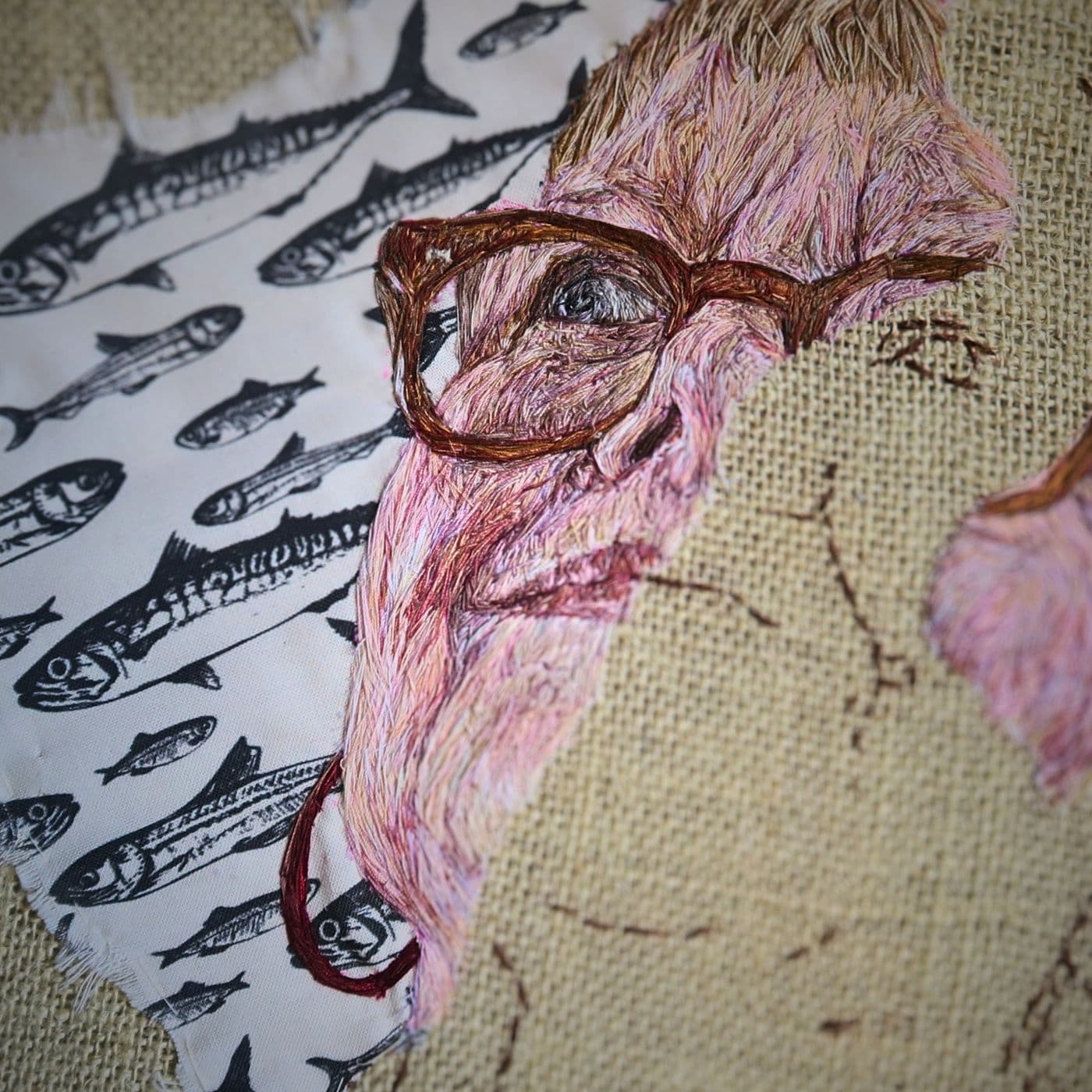
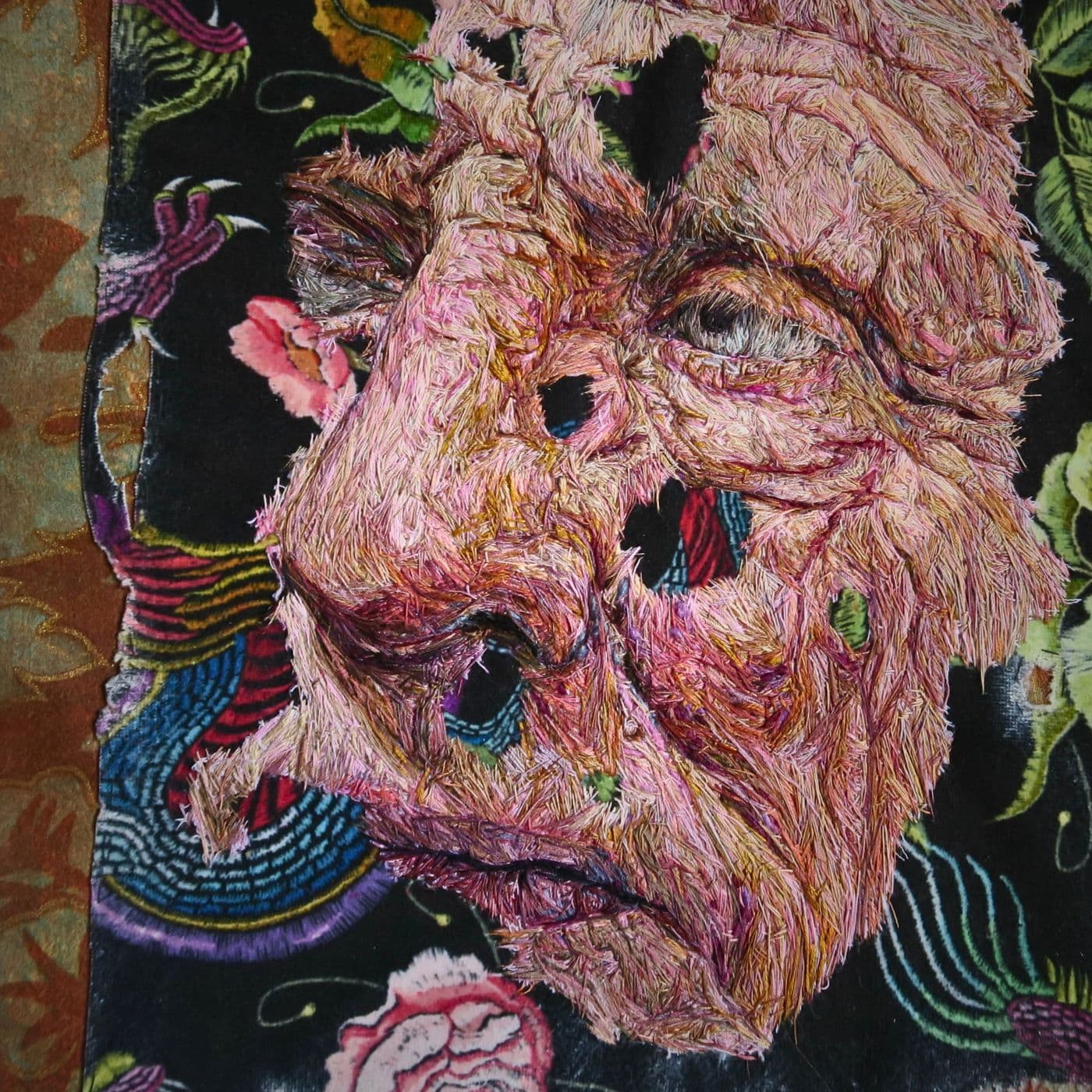
Mining your stash
I’m very aware of what fabrics and materials I use, particularly as so much of my artwork is about nature and its plight.
I try to source most of my threads, fabrics and wallpaper from charity shops, or I use recycled materials. I often cut up old clothing for my artworks, but occasionally I have to buy new.
I’m a hoarder and I’ll save scraps left over from past artworks. These are invaluable especially if I’m layering up fabrics for a background.
“Go through your fabric stash every time you start something new and try to use at least one item from it.”
Emily Tull, Thread painter
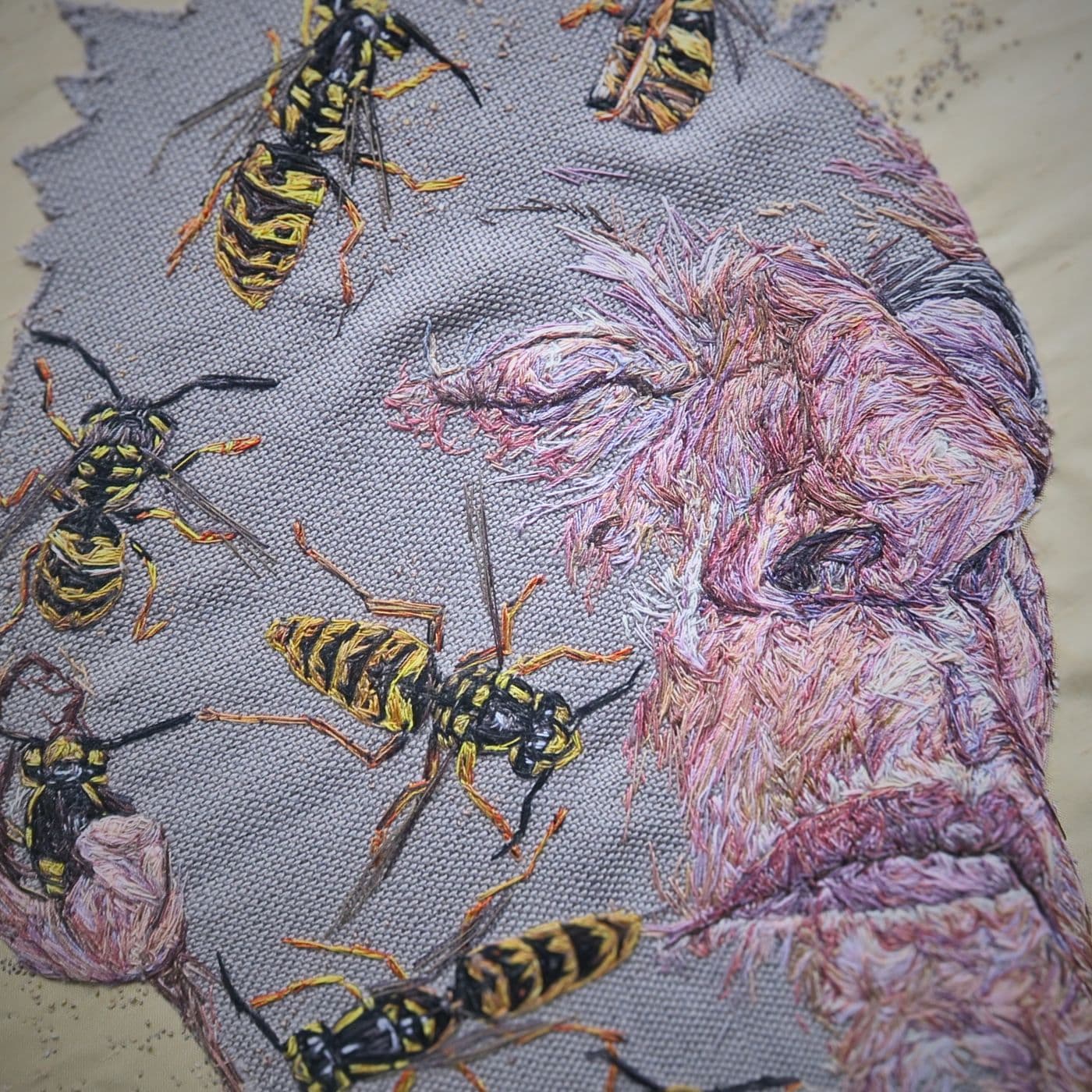
Stitching paper
My interest in wallpaper is partly inspired by sustainability and also because I’ve always enjoyed looking at layers of peeling or ripped paper. I love the sense of history and personality it gives a building.
I first introduced wallpaper in my fabric-based work, using floral materials against contrasting patterns and colours. Now I use actual paper to stitch on.
I prefer to use vintage wallpaper as it is sturdier and has less of a slippery surface for the needle. Sometimes I only stitch the eyes, giving only a hint of the person with a silhouette cut out of a contrasting paper to the background.
“Paper is challenging to stitch, but that’s what I like most – pushing the boundaries of what I can stitch.”
Emily Tull, Thread painter
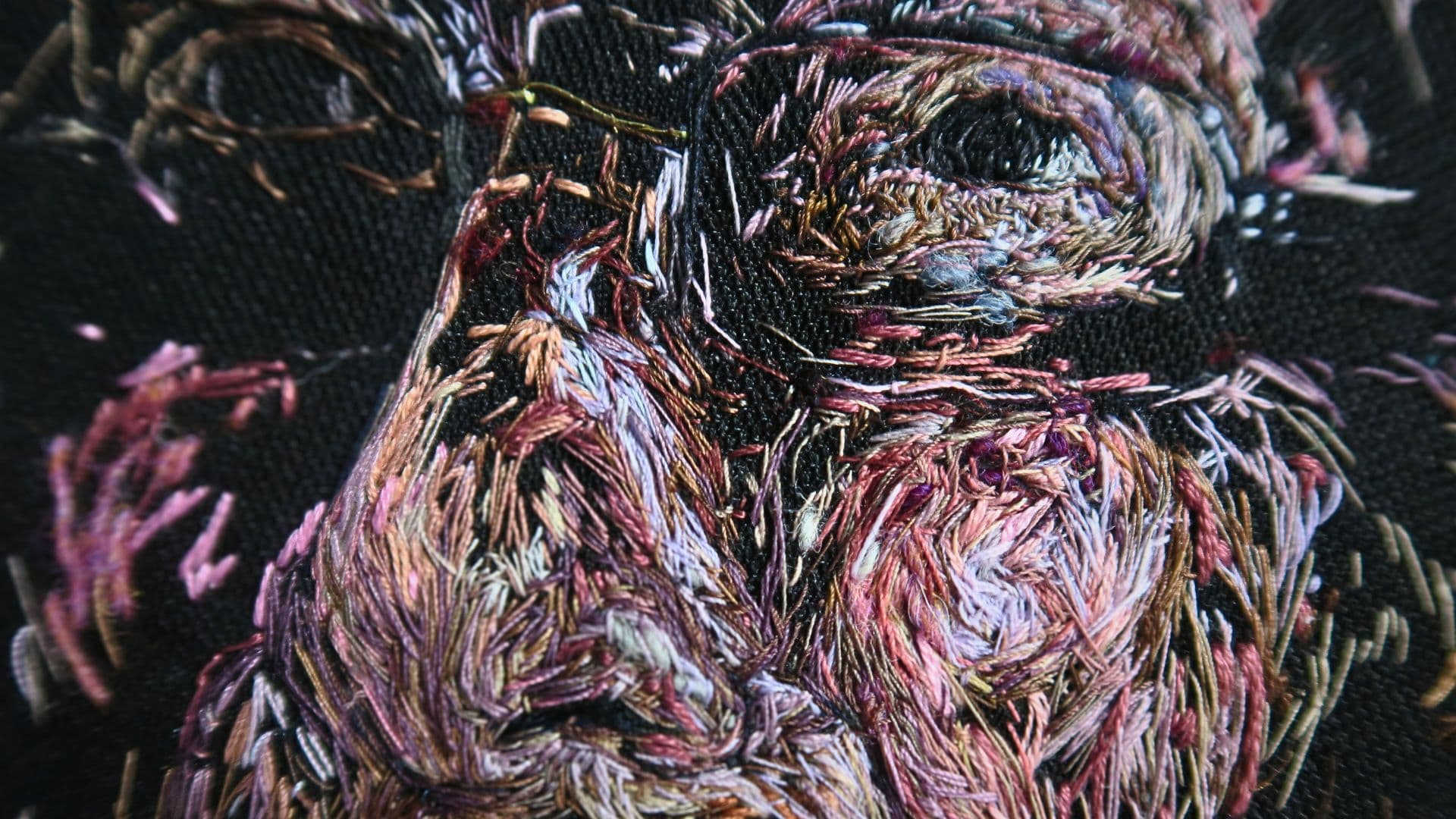
Freedom in simplicity
Hand stitching is my only technique. I use a basic stitch which I vary in size and layer. If the thread knots, I leave it and stitch it in. This adds texture, especially in wildlife pieces.
Often the stitching tension is manipulated when I work on a sculptural piece. Pulling in the material tight helps create the three-dimensional effect – as seen in my mermaid purses artwork, Tangled.
“My lack of training has given me the freedom to manipulate hand stitching without being restricted by the ‘right way’ to do it.”
Emily Tull, Thread painter
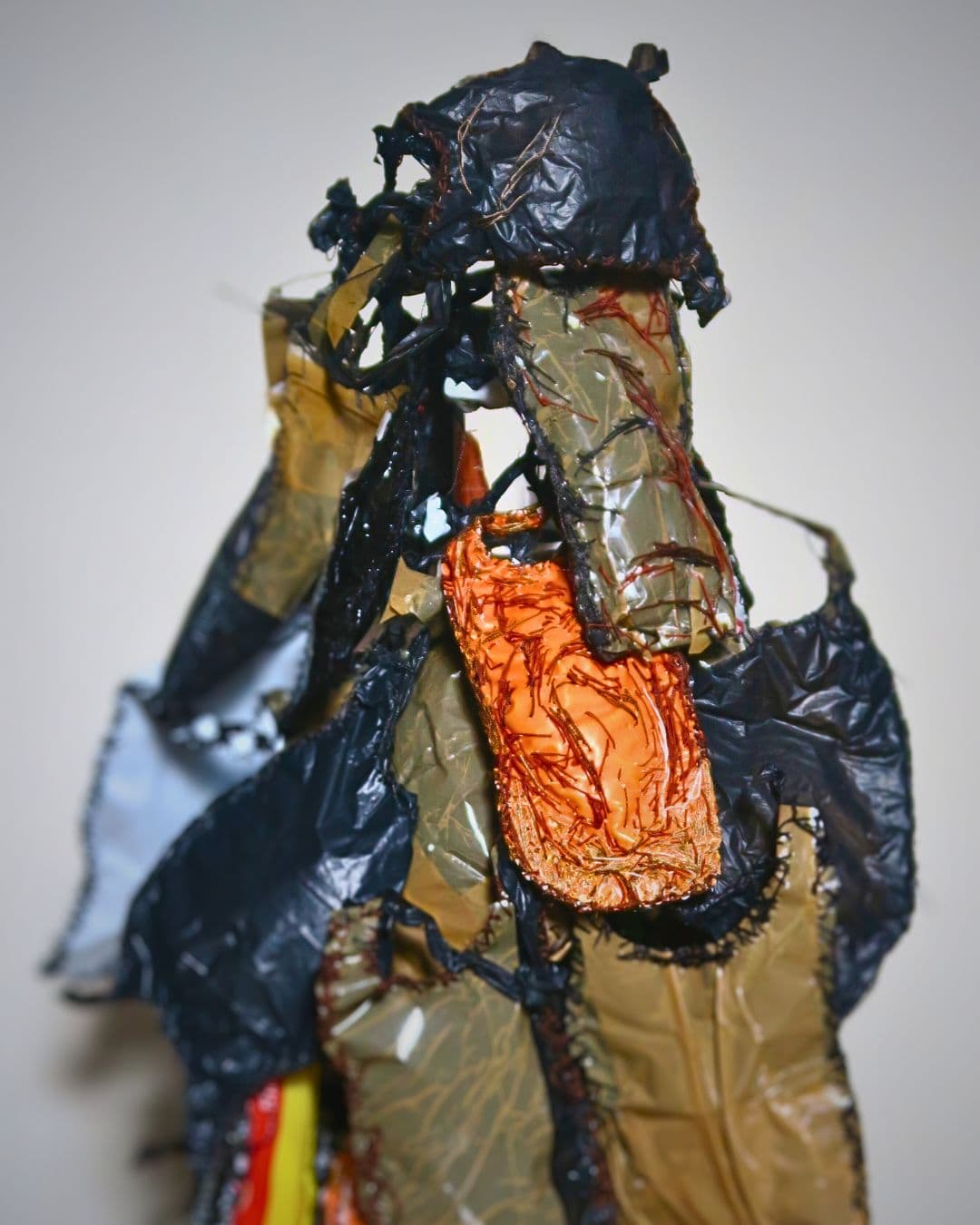
Inspiration from frustration
I originally trained as a painter. I’ve always experimented with different techniques but I reached a point where I’d become frustrated. I realised that the kind of finish I wanted to create was never going to be achieved with my style of painting.
One day, while stitching hessian onto a willow frame, I had a light-bulb moment and decided to stitch a face onto the fabric. I drew my eye on a scrap of muslin and then pinned it onto the hessian.
I cobbled together a few threads and hand-stitched a basic eye over my drawing. I remember thinking the result was awful but I’d enjoyed the process.
Drawing – whether it’s a quick sketch or very detailed – is my favourite technique. Drawing with threads reminded me of using coloured pencils. I bought some more thread colours and went on to make three male portraits.
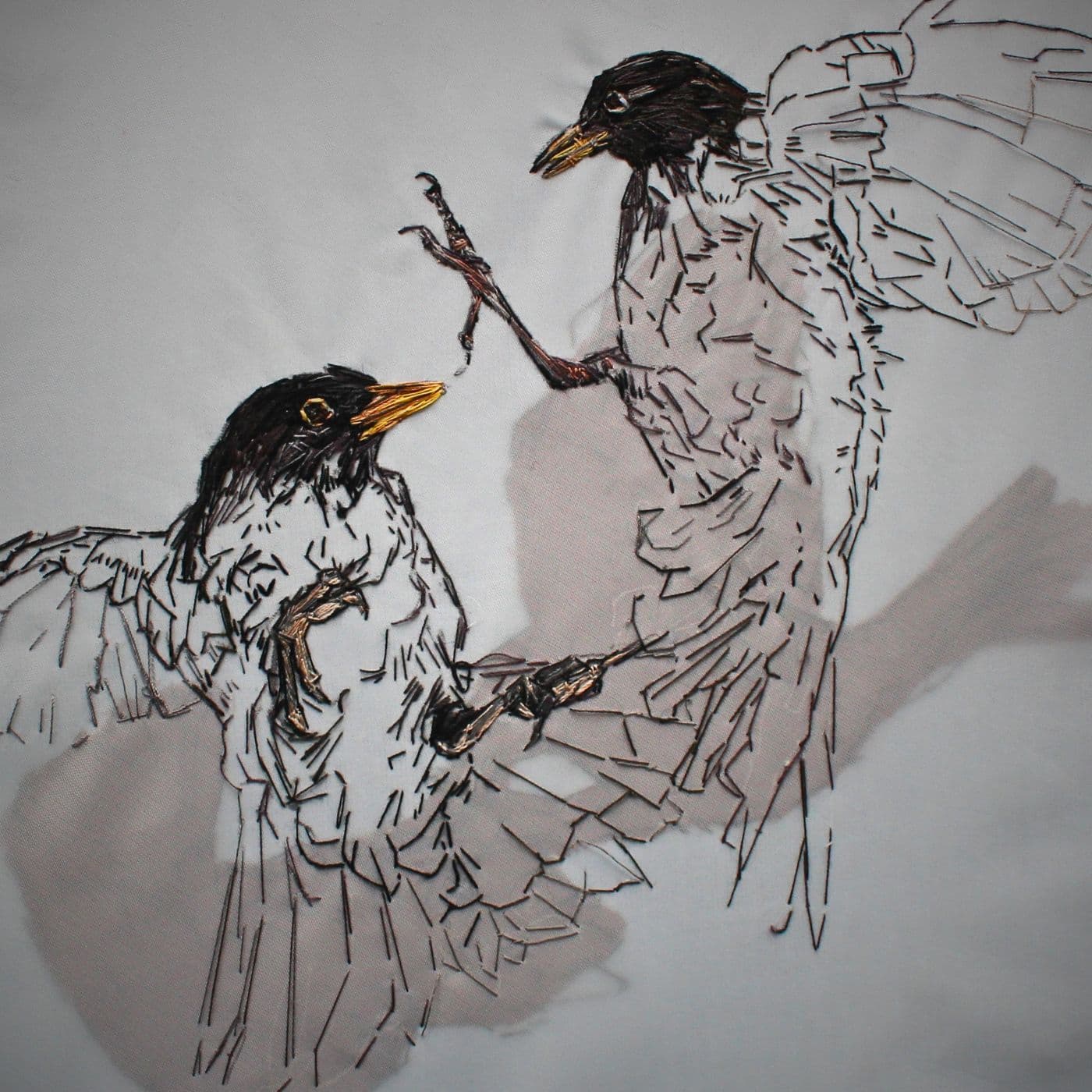
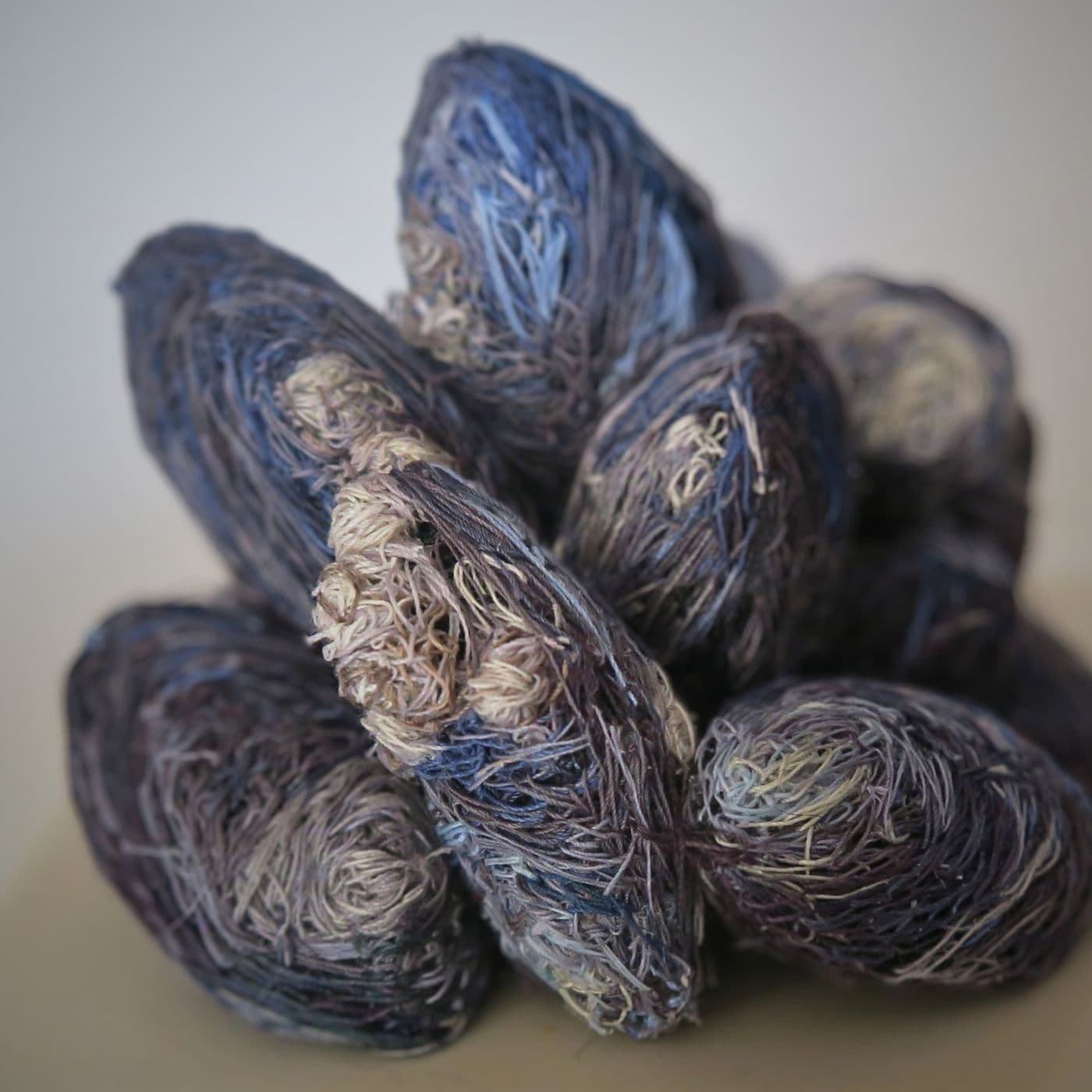
Paint versus stitch
When I first dabbled with hand embroidery, it was the control that I had in mark making that made me think this could be the medium for me. My background was oil painting with a palette knife, which although quick does give a very different effect.
Even after 16 years I still struggle with how long stitching can take. However, the fine detail I can achieve, along with its painterly feel, outweighs my impatience.
Because of the way I can use this painterly style of stitching, my subject matter has expanded compared to my painting days. Other benefits include being able to remove stitching easily and – apart from occasionally stabbing my finger – stitching is therapeutic.
I also find I’m not as precious with my artworks (unless I’m using expensive fabric) as I was with my paint. I have become looser and freer. I use sandpaper to rough up the surface and fray edges, and I rip up materials.
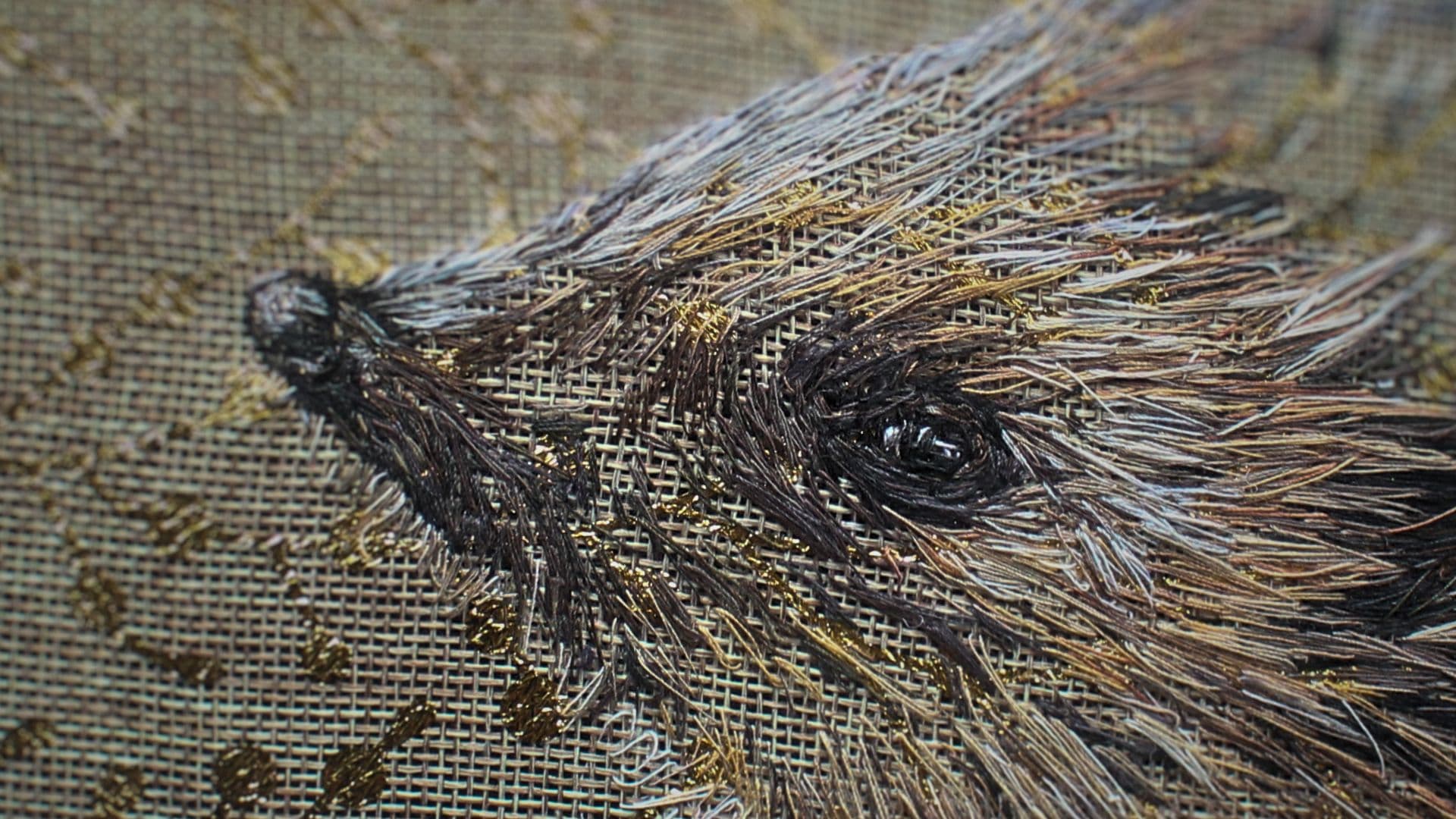
My working week
As a freelance artist, no week is ever the same, as I work on projects in other mediums alongside my stitch art.
If I’m working from home, the first hour is dedicated to emails and scheduling social media posts. If I am working on artworks, I aim to start work on them as early as possible in the day, especially as I only stitch during natural daylight hours.
My evenings are often dedicated to admin, or planning and prepping. I often research multiple ideas at a time and can start the process many months before I have the opportunity to stitch them.
Research is one of my favourite parts of the process. I love learning about my subject matter in detail. Although sometimes it can take time to find what I’m looking for, I love the challenge of searching.
“I tend to do a rough drawing with notes initially because I prefer to put the energy into the actual artwork.”
Emily Tull, Thread painter
Taking time out
I really enjoy working in different mediums and at very different scales. I work on community projects, including carnival builds and lantern parades, alongside my stitched artwork.
Although it means I have periods away from stitching, I like to have a break from making my personal art.
Social media definitely puts pressure on creatives to feel like they have to be producing work all the time and, unless you are feeling inspired, that is unhealthy. We are not machines and taking time out is refreshing.
I like to spend time on the beach or a nature reserve where I feel relaxed and centred. I also like to go to places that inspire my art so it feels productive without pressure.
“It’s healthy for my soul to have time away and look at ideas with fresh eyes.”
Emily Tull, Thread painter
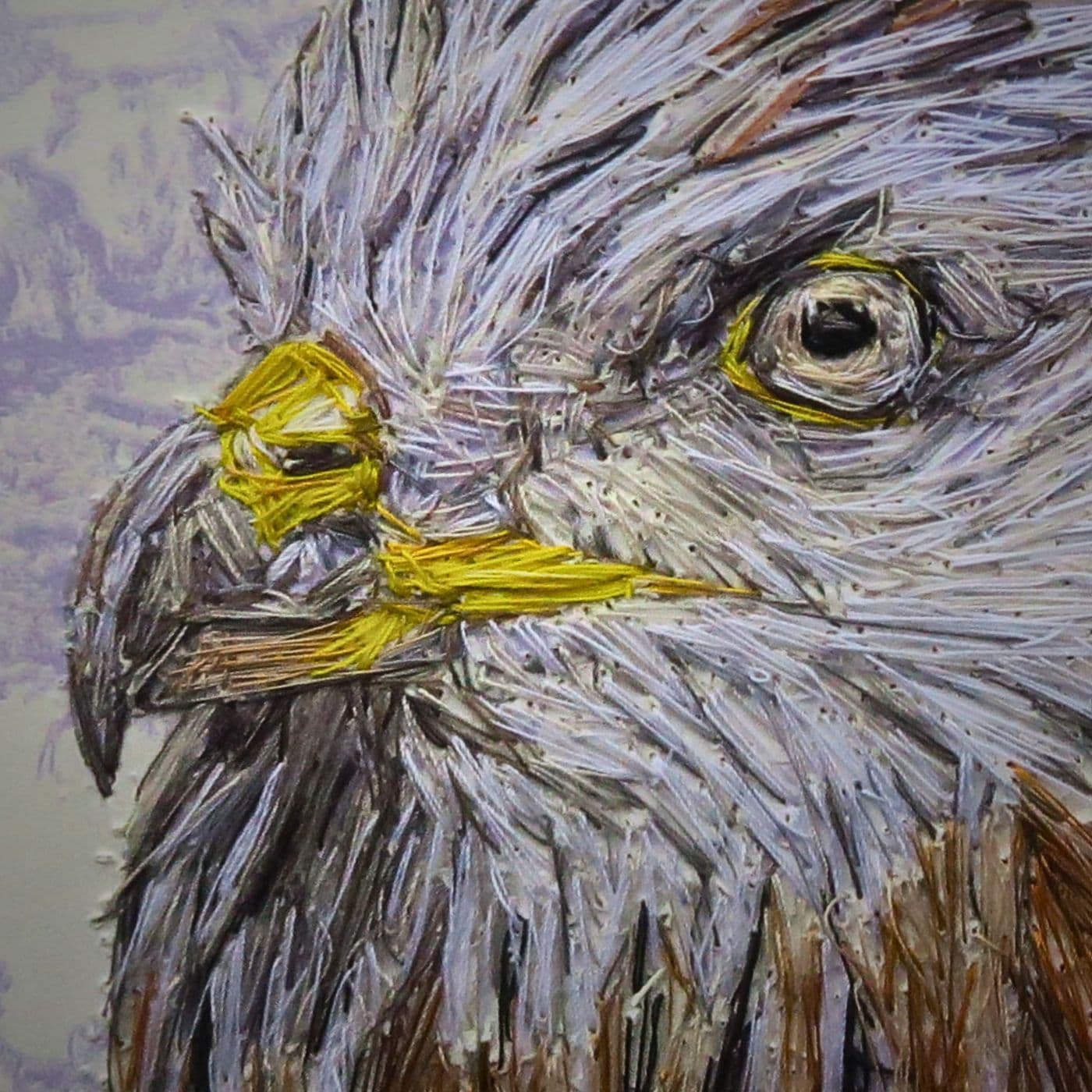
Look & look again
When I’m working on a new artwork and have decided on my reference image(s), I spend a few days carefully looking at the photograph, before I start making.
Spending time observing helps your eyes hone in on the finer details. You’ll be surprised at the subtleties in colour that will appear. This will help inform your choice of fabric and threads.
“If you are using a reference image, my biggest tip is to keep looking at it.”
Emily Tull, Thread painter
Cultivate self-belief
I have always followed what interests me. I work in my own style of stitching, which comes naturally to me. Over time you’ll create your own shorthand of making. This is how you remain authentic to yourself.
Don’t be distracted by what other people are making or compare yourself to them. That can undermine your confidence and it’s easy to get caught up with a fashionable style.
“Believe in yourself – don’t try to be anyone else.”
Emily Tull, Thread painter
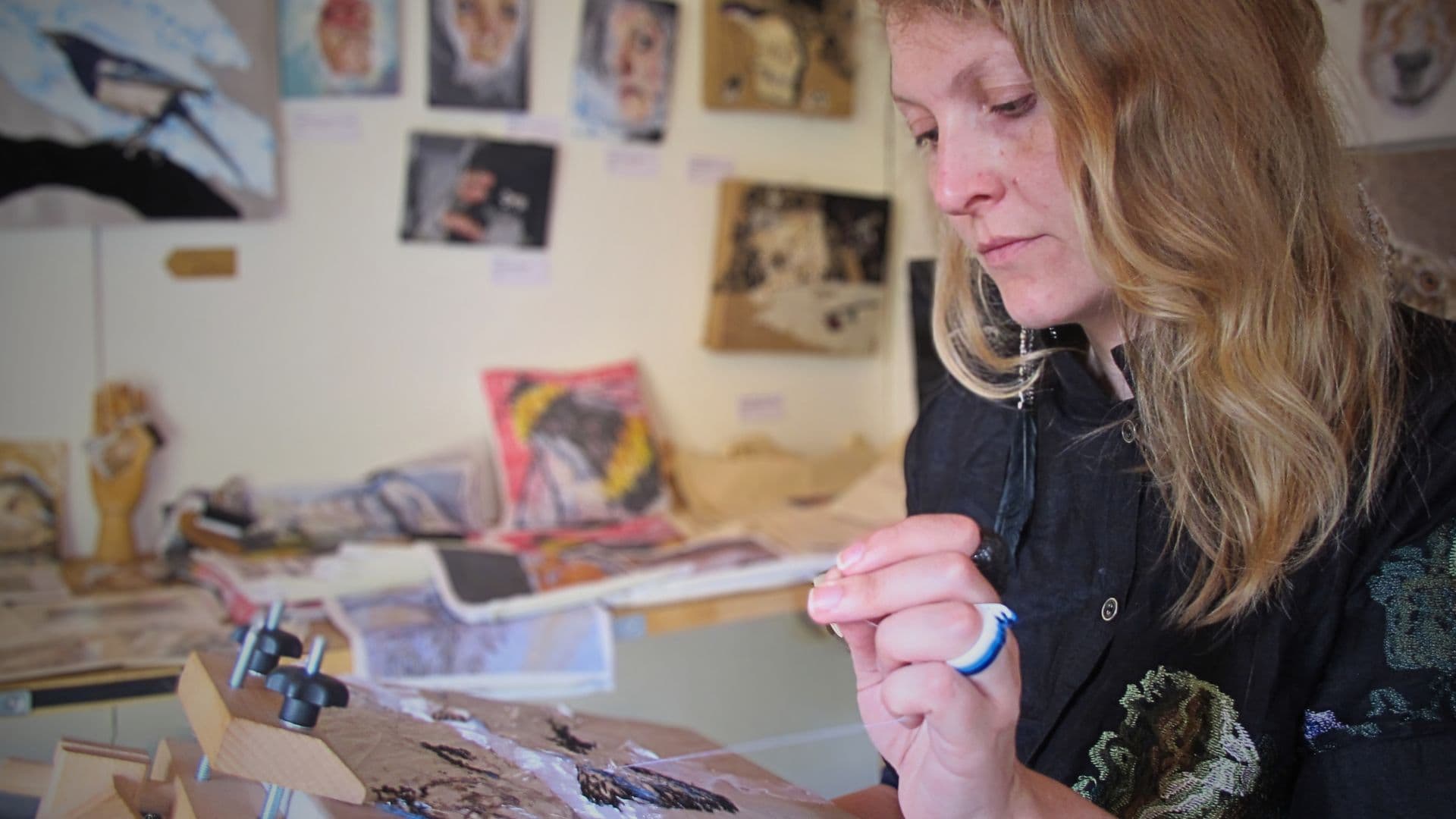
Constantly evolving
Over time, my work has developed from tomb paintings to ripped wallpaper and I’ve changed the materials that I’m stitching into.
There’s now a blurring of the lines between portrait and wildlife. I’m creating portraits that include wildlife. This introduces another dimension to people’s personalities and it’s also an observation of mankind’s relationship with nature.
It’s been good to bring together themes that started separately and it’s something I want to continue exploring.
I also want to carry on experimenting with the surfaces that I can stitch into, both two-dimensionally, and three-dimensionally and also for installation displays.
Recently, I’ve been looking back, to move forward. I’ve been focusing on my oil paintings and craving the lumps of colours that would appear in my work.
After all this time, I feel that I understand my process and I’ve got it to a level I’m happy with. Now I feel it’s time to see if I can create those lovely painterly lumps in stitch. How I do that we’ll have to see but I am looking forward to experimenting.
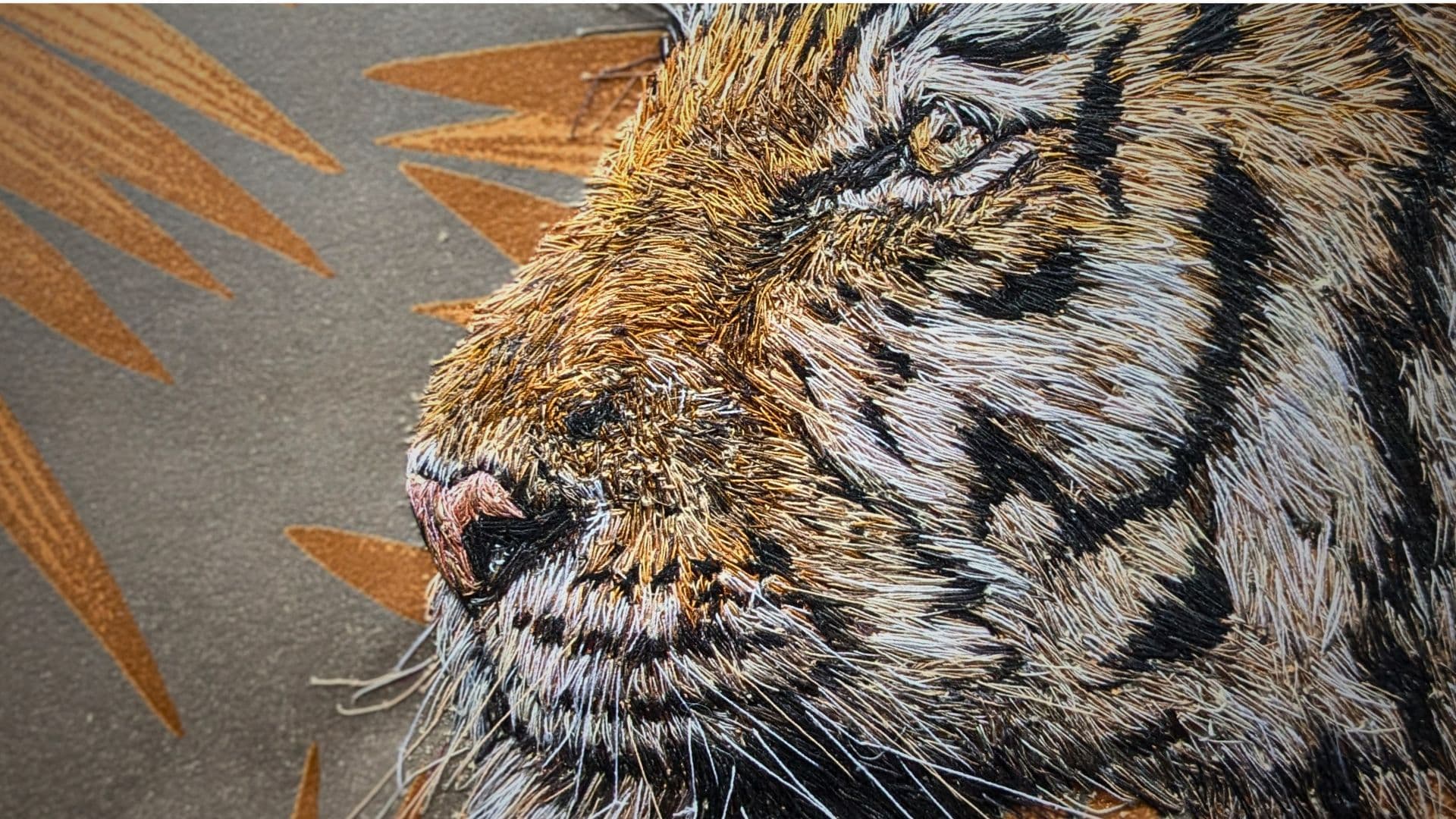

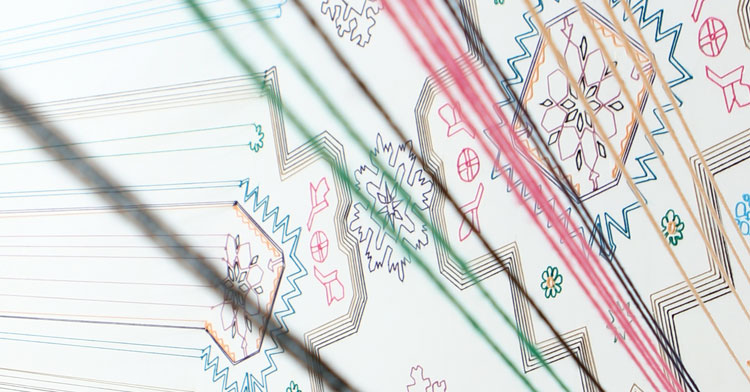
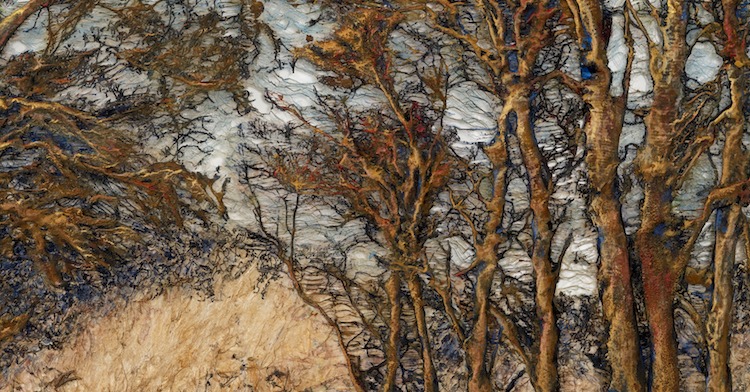
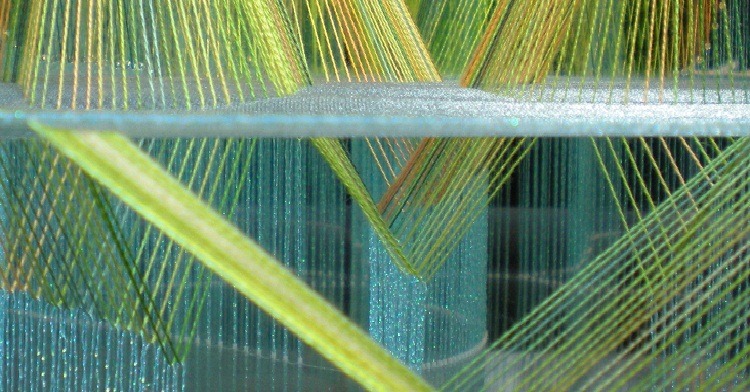
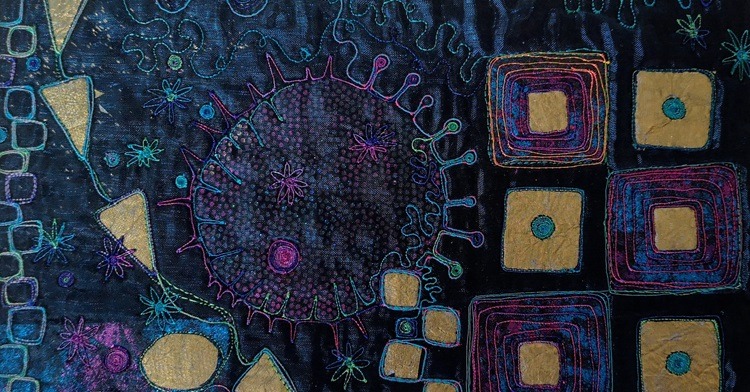
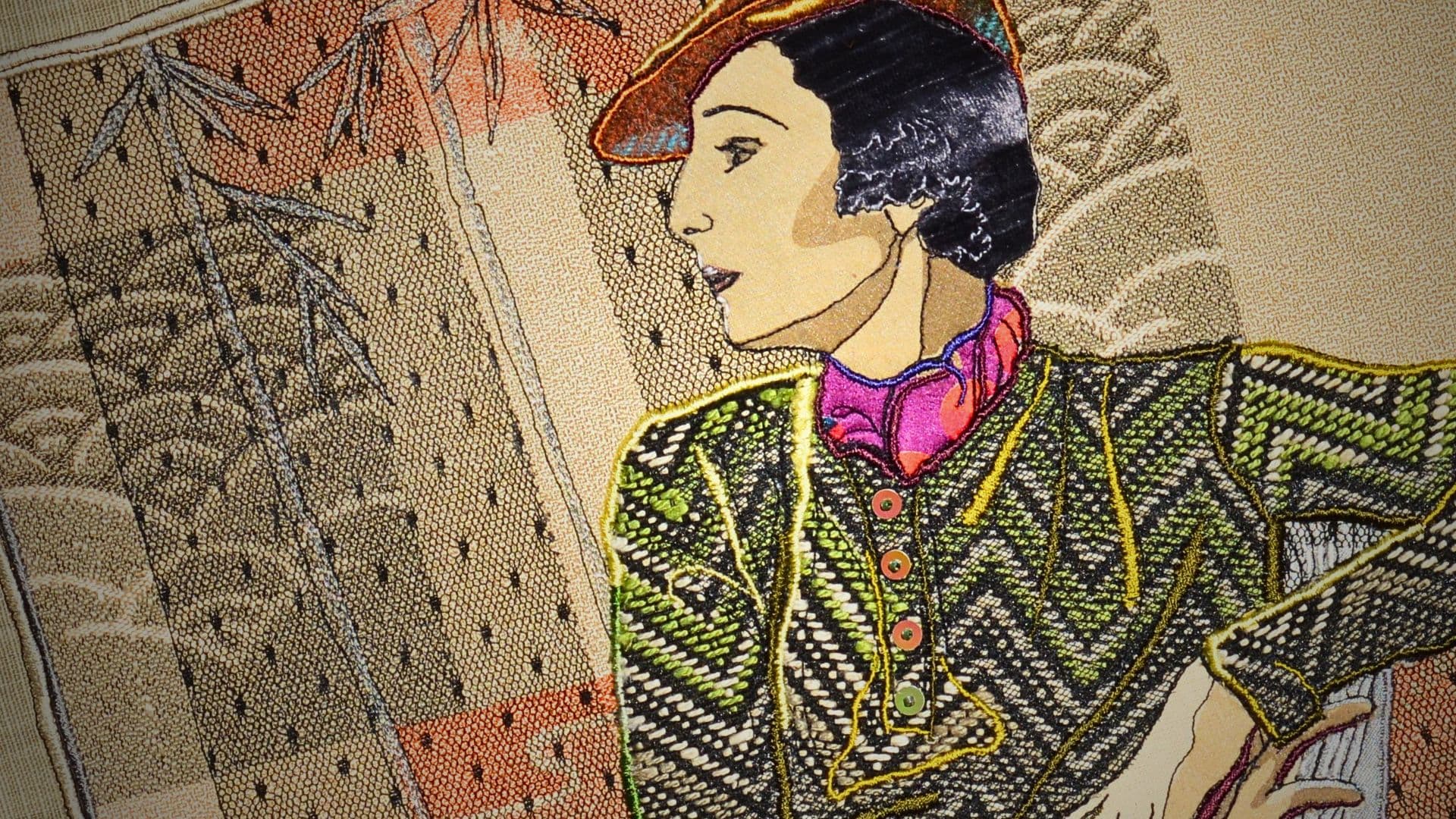
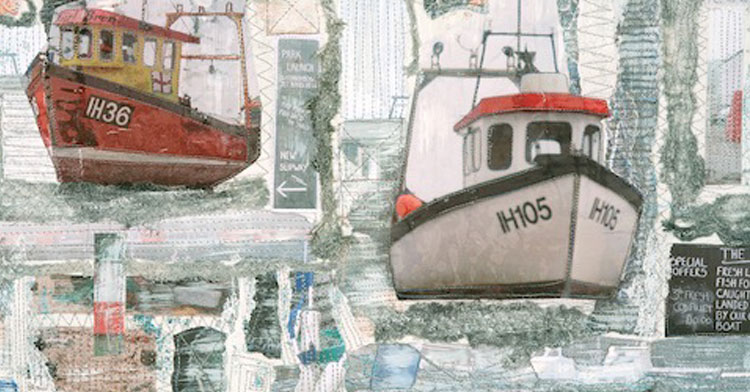
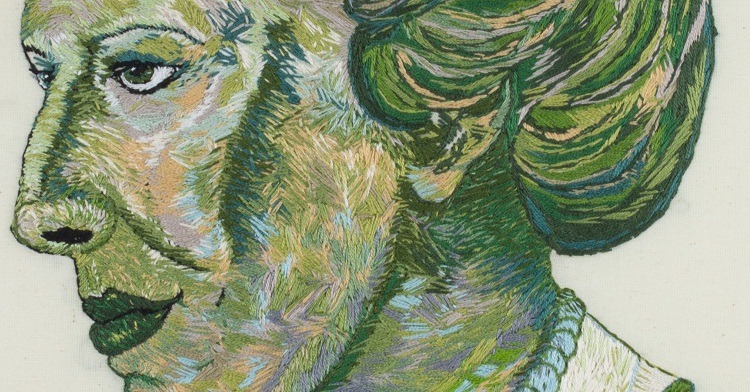
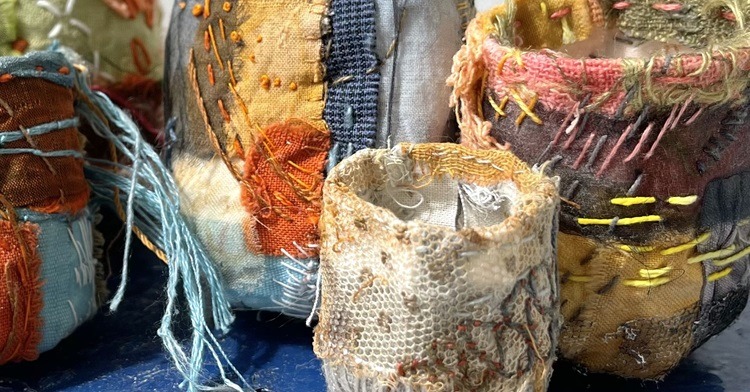
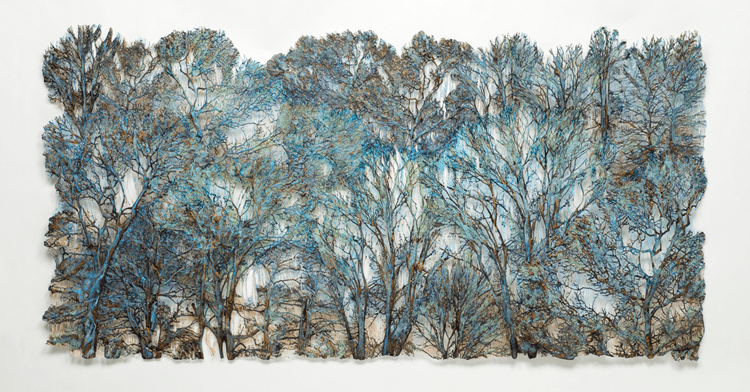
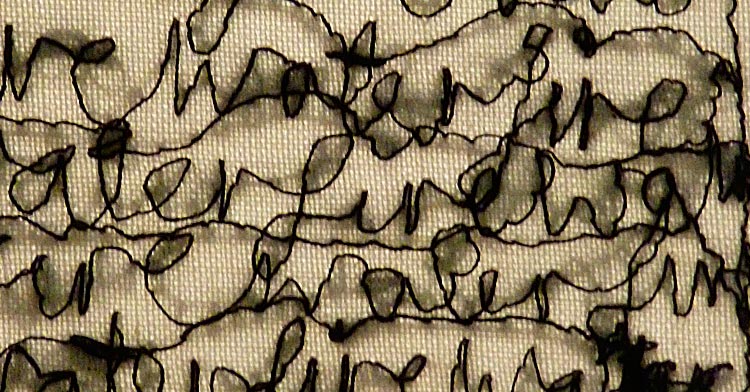
10 comments
Lindy Gibbon
I loved this article and reading about Emily’s process was inspirational. Emily comes across as very approachable and thoughtful in her willingness to share her ideas and the challenges she has encountered. Delightful. Thank you very much for sharing.
Rebecca Quaid
Thank you, Emily! Stunning creations!
Barbara Bexley
I love Emily’s portraits. They are the epitome of ‘more is less’. When the eyes are right there is room for the viewer/observer in her portraits. Thank you Emily.
Diana Springall
Great work and a valuable vision for the subject.
Jayne Hanson
I’m so pleased that you have Emily Tull back. Her work is amazing and I am inspired to get back to portraits.
Win Willcox
Incredible work this is pure genius
Gina
Her work is so soft looking and beautiful
eva andrew
Thank you for such an inspiring article! I have continually come back to stitching from the other media but never fully satisfied. The work of Emily Tull gives me inspiration to start again…and looking forward to it! Thank you!
Lindi Green
I really enjoyed reading about Emily Tull’s work. I found her approach very helpful. I too, tend to start in the middle of a design and work out.
I also found the textures of her work comforting. Sometimes, when I look at what I have done, I am very critical if it’s not totally neat. Allowing the thread to make it’s own mark can clearly give work an extra vitality.
Sharron Begg
I am totally inspired !
I love Emiy’s portraits !